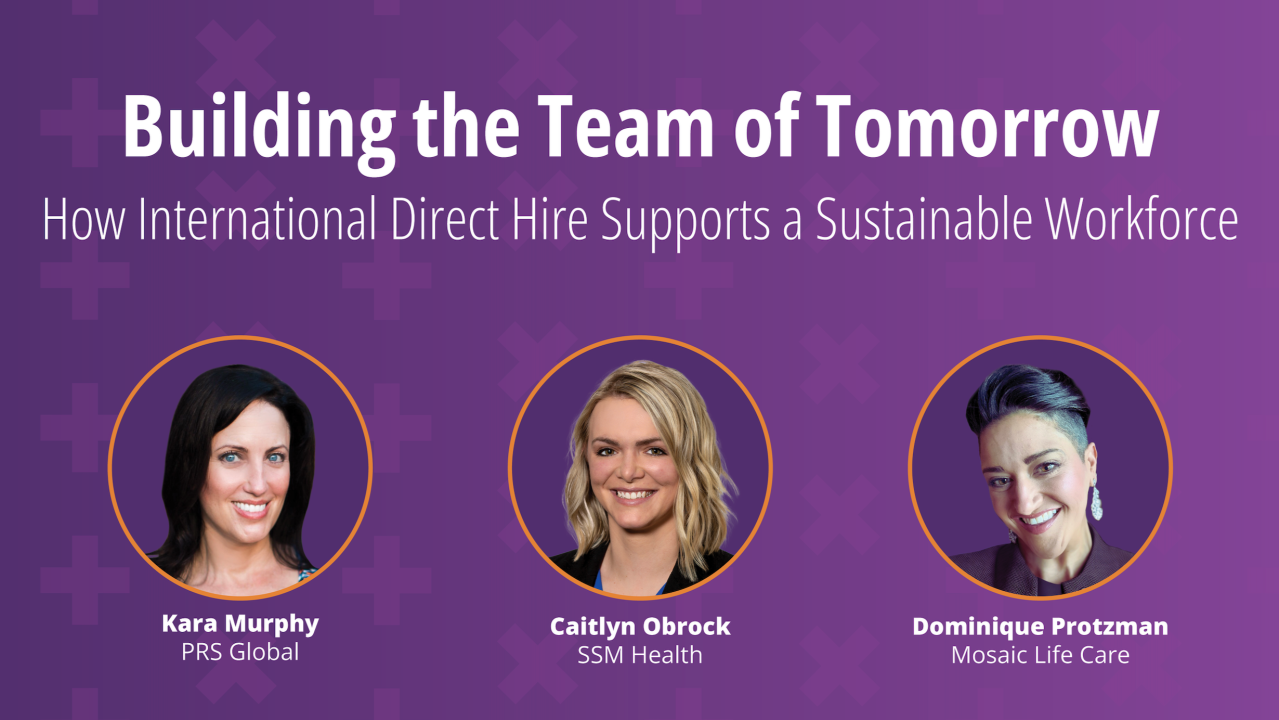What Forward-Thinking Health Systems Are Doing Right

One of the most valuable things we can do as healthcare leaders is to learn from one another. That’s why our recent webinar with Caitlyn Obrock from SSM Health and Dom Protzman from Mosaic Life Care resonated so strongly.
Both leaders shared how their organizations are moving beyond short-term staffing fixes to focus on building clinical teams that are built to last. Their insights offer practical strategies and inspiration for any leader navigating today’s workforce challenges with an eye on the future.
Here are a few takeaways worth reflecting on:
1. The Skill Gap Is Real—And It’s Growing
The retirement cliff isn’t just coming; it’s already here. At Mosaic and SSM, it’s not only the open roles that are raising concern, but the experience gap left behind. Both leaders emphasized that we can’t simply backfill roles; we must redesign how we support the incoming generation of nurses.
One promising strategy? Leveraging internationally educated nurses not just to stabilize staffing, but to mentor. Hospitals are finding that a high percentage of experienced international nurses transition into preceptor roles within six months. That’s not just a short-term staffing strategy; it’s a long-term success strategy for new grads.
2. Layering Pipelines is the New Workforce Model
Dom introduced the “mountain model,” where staffing moves beyond the traditional mix of core and agency staff. This approach takes a layered strategy: new grads, internal float pools, per diem options, international hires, and even recruiting from high schools and middle schools to build early awareness of healthcare careers.
At SSM, data-driven planning allows leaders to understand attrition trends and anticipate internal transfers. That visibility enables smarter workforce forecasting and smoother onboarding for new clinicians, whether they’re domestic grads or foreign-trained professionals.
3. Stability Creates Space for Growth
Both leaders emphasized that international hiring isn’t about taking shortcuts or compromising stability. At Mosaic, Dom shared data showing that units with more international nurses had better overall retention, even among domestic staff. The ripple
effect of culture, community, and consistent staffing makes it easier for teams to collaborate, precept, and plan ahead.
And that stability frees up capacity to focus on developing new grads, supporting education, and reimagining clinical pathways.
4. Belonging Can’t Be an Afterthought
If we want long-term retention, onboarding can’t stop at orientation. At both organizations, intentional onboarding, including town halls, Facebook groups, community welcome events, and coaching, helps ensure that international clinicians feel like part of the team before they even land in the U.S.
Dom said it best: “We’re not bringing people in to fill jobs. We’re bringing people in to strengthen the workforce.”
5. It’s Not Just About Nurses Anymore
While international direct hire initially focused on addressing RN shortages, health systems like SSM and Mosaic are now thinking more broadly and strategically. They’re expanding into hard-to-fill roles, such as medical technologists and physical therapists, especially where quicker visa pathways, like the TN or H-1B, are available.
Some systems are also leveraging the talents of accompanying spouses, many of whom are nurses or allied health professionals themselves, adding unexpected depth to the workforce pipeline.
In departments requiring bachelor’s degrees, such as emergency, ICU, and float pool, the H-1B visa has emerged as a faster option for hiring experienced staff, often within six months. These professionals not only fill gaps but also help stabilize high-acuity units that are particularly vulnerable to turnover and burnout.
This kind of strategic expansion is becoming essential as leaders think beyond role-based hiring and begin aligning visa pathways to broader workforce needs.
At PRS Global, we’re proud to partner with leaders like Dom and Caitlyn who are showing what’s possible when workforce planning becomes intentional, layered, and community driven.
If you missed the webinar and want to hear the whole conversation, you can watch it here: Building the Teams of Tomorrow
And if you’re exploring how international direct hire fits into your workforce strategy, I’d be happy to connect. For many organizations, internationally educated professionals are a critical part of workforce planning, helping stabilize staffing, strengthen unit culture, and supporting the success of new graduates by closing experience gaps.
Let’s move beyond filling shifts and start building teams equipped for the future together.
